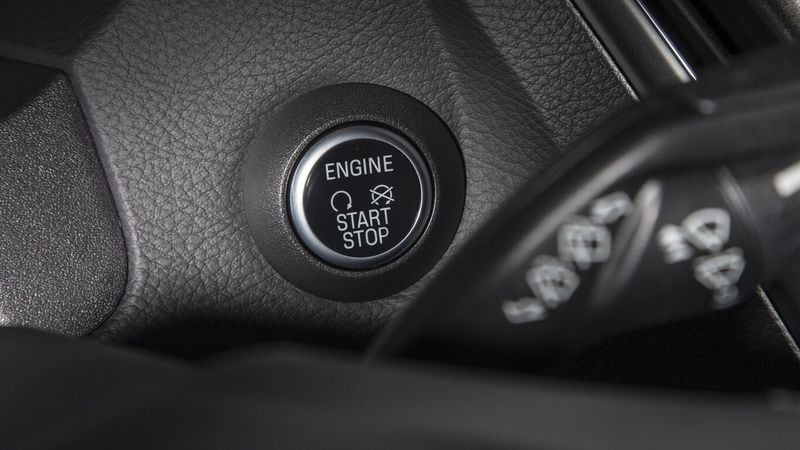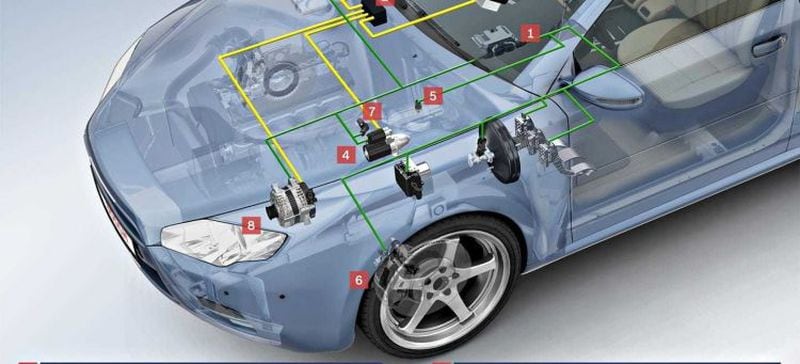Although every day it is more common to equip it, and it helps to reduce consumption and emissions, there are situations in which it is better to deactivate this function. Discover the advantages and disadvantages of a technology that is here to stay.
The Start/Stop system is one of the most common elements in cars today. From city cars to super sports cars, most currently use this technology to reduce fuel consumption and emissions. Despite its popularity, however, there are still fears and ignorance about how it works, its pros and cons.
That is to say, after so many years on the market and after almost all vehicles have adopted it, there are still those who are against Start/Stop. There are even drivers who have adopted the routine of turning off the system every time they get into the car. Therefore, the question is when it should be enabled or disabled. Let’s see.

It was in the 1970s and 1980s that manufacturers began to develop this technology, which automatically stops the engine when the car is stopped for a certain time – for example, at a red light – and also starts it automatically when the driving resumes. Thanks to this, it was discovered that fuel consumption and polluting emissions could be optimized.
“Most of the time we drive around town, we come to a halt at traffic lights or in vehicle restraints due to heavy traffic or traffic accidents. From this point of view, the Start/Stop system makes it possible to reduce fuel consumption between 10% and 15%, and polluting particles such as hydrocarbons (HC), carbon monoxide (CO), carbon dioxide (CO2) and nitrogen oxide (NOX) which are harmful to health and the environment”, explains Héctor Flores, professor at the School of Engineering and natural resources of the Duoc UC Maipú headquarters.

Turning off the engine in standstill situations was then the solution. The problem, at least at that time, was that starter motors had a limited lifespan, so the challenge was to design the technology necessary for the car to reliably guarantee more starting cycles.
For this reason, it took decades for this technology to reach the maturity necessary for its standardization. Currently, the usual architecture of the Start/Stop system consists of a “reinforced” starter, a more efficient battery – since it must withstand more charge and discharge cycles – and a heat engine optimized for not be penalized in lubrication and refrigeration, due to continuous stop and start events.

Similarly, and as a general rule, today’s Start/Stop systems are powered by the vehicle’s sensors to know what you want to do. Engine shutdown occurs every time we stop the car or decelerate at speeds below 5 km/h. Starting occurs well when we release the brake pedal in automatic cars or engage the clutch in those with manual gearboxes. If the first cars with Start/Stop made the stop-start process noticeable and even uncomfortable, today its operation is almost instantaneous.
In some micro hybrids it’s even better because the heat engine disconnects when there are several meters left to park, there are even models that allow you to travel several meters in electric mode when you resume driving. However, disabling Start/Stop has some advantages.
Can the Start/Stop be deactivated? Is it practical?
For the luck and peace of mind of all its detractors, almost all cars with Start/Stop allow this function to be deactivated in a simple way, simply with a button usually at hand, on the dashboard or on the console central.
Although Start/Stop systems have been designed to take into account all kinds of situations and risks, it is important to know that there are times when it is better for the engine to rest for a few seconds to lubricate its parts and improve its cooling.
Situations of intensive use such as journeys of several kilometres, major efforts due to a heavy load or driving on a circuit, are highly recommended situations where deactivating the Start/Stop function to give your organs a rest time engines, especially in supercharged or high-powered engines.

According to Flores of Duoc UC: “The Start/Stop system, stop and start, can cause an excess of temperature. Thus, there are situations in which the use of the system is not recommended, for example, when the engine is used intensively, which requires a great effort from the mechanics. In these cases, a rest period is important for the coolant and oil to reduce the engine temperature and avoid its saturation”.
“Another of the problems derived from the Start/Stop is that it causes premature wear of the battery, the starter and the alternator. While it is true that the architecture is designed to support many more stop and start cycles; in the long term, it can accelerate the wear of these components whose repair or replacement cost is high”.
“The battery of vehicles with Start/Stop technology is special, to be able to withstand high voltage demand many times. This forces the driver of the vehicle to buy the battery recommended by the manufacturer, which can cost twice as much as the classic ones,” he points out.
Beyond that, Start/Stop systems have already more than demonstrated their efficiency and reliability, so they are here to stay.
Follow on MTOnline
Source: Latercera
I am David Jack and I have been working in the news industry for over 10 years. As an experienced journalist, I specialize in covering sports news with a focus on golf. My articles have been published by some of the most respected publications in the world including The New York Times and Sports Illustrated.


